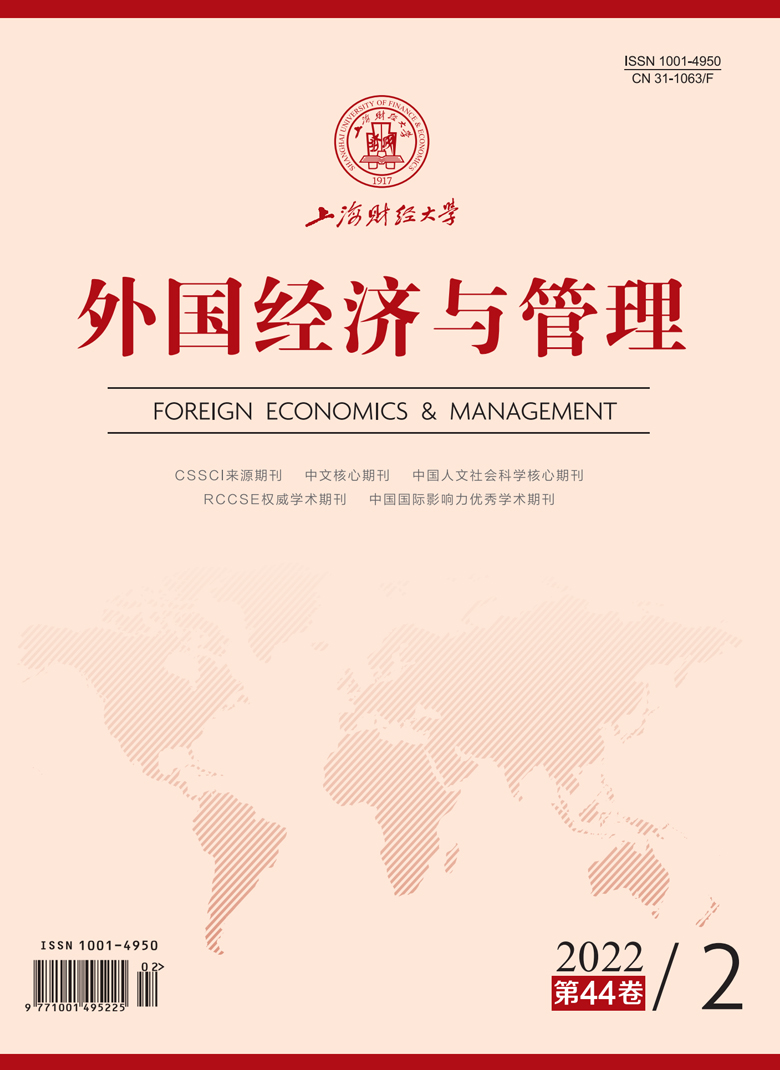企业是落实碳中和战略的实践主体,是我国履行“2030年碳达峰、2060年碳中和”承诺的关键环节,但相关企业持续参与碳中和的动力不足。因此,将与企业战略相关的管理和激励手段融入碳中和的全过程成为实现企业可持续碳中和的必由之路。本文首先从多学科视角对企业碳中和的相关研究进行了梳理和总结;随后,基于企业社会责任研究,从责任确认、责任履行、责任补偿、责任信息披露和责任履行效果五个方面比较分析了企业碳中和责任的独特性及管理难点;最后,提出了构建企业碳中和战略的基本思想,瞄准决定各阶段成功的关键要素,解析企业碳中和的责任确认机制、减排激励机制、抵消管理机制、信息披露机制和效果反馈机制,以反映“确得准→减得足→抵得当→披得清→激得长”的企业碳中和战略路径。本文提出的企业碳中和战略将为企业参与碳中和实践提供理论指导,有助于推动企业持续参与碳中和,助推国家“30•60目标”的实现。
中国企业的碳中和战略:理论与实践
摘要
参考文献
1 范英. 温室气体减排的成本、路径与政策研究[M]. 北京: 科学出版社, 2011.
3 何建坤, 陈文颖, 滕飞, 等. 全球长期减排目标与碳排放权分配原则[J]. 气候变化研究进展,2009, 5(6): 362-368. DOI:10.3969/j.issn.1673-1719.2009.06.008
6 贾明. 碳交易启动在即需构建更有效的碳交易市场[N]. 每日经济新闻, 2021-06-29.
7 贾明, 吕明洁. 发挥燃煤电价市场化机制 推进高耗能企业低碳转型[N]. 每日经济新闻, 2021-10-15(012).
8 廖文龙, 董新凯, 翁鸣, 等. 市场型环境规制的经济效应: 碳排放交易、绿色创新与绿色经济增长[J]. 中国软科学,2020, (6): 159-173. DOI:10.3969/j.issn.1002-9753.2020.06.015
9 刘慧, 宁嘉琪, 左曼. 防止企业碳信息造假可从三大方面着手[N]. 每日经济新闻, 2021-10-13(006).
10 罗婧璇, 贾明. 企业需将低碳转型和高质量发展有机衔接[N]. 每日经济新闻, 2021-09-17(007).
11 吕明洁, 贾明. 企业安全降碳可从四大方面着手[N]. 每日经济新闻, 2021-11-04(005).
13 钱浩祺, 吴力波, 任飞州. 从“鞭打快牛”到效率驱动: 中国区域间碳排放权分配机制研究[J]. 经济研究,2019, 54(3): 86-102. DOI:10.3969/j.issn.1674-9448.2019.03.010
15 宋晓华, 蒋潇, 韩晶晶, 等. 企业碳信息披露的价值效应研究——基于公共压力的调节作用[J]. 会计研究,2019, (12): 78-84. DOI:10.3969/j.issn.1003-2886.2019.12.012
17 唐启升, 刘慧. 海洋渔业碳汇及其扩增战略[J]. 中国工程科学,2016, 18(3): 68-73. DOI:10.3969/j.issn.1009-1742.2016.03.012
19 田立新, 张蓓蓓. 中国碳排放变动的因素分解分析[J]. 中国人口·资源与环境,2011, 21(11): 1-7. DOI:10.3969/j.issn.1002-2104.2011.11.001
22 魏一鸣, 米志付, 张皓. 气候变化综合评估模型研究新进展[J]. 系统工程理论与实践,2013, 33(8): 1905-1915. DOI:10.3969/j.issn.1000-6788.2013.08.001
25 杨磊, 张琴, 张智勇. 碳交易机制下供应链渠道选择与减排策略[J]. 管理科学学报,2017, 20(11): 75-87. DOI:10.3969/j.issn.1007-9807.2017.11.008
26 张军扩, 侯永志, 刘培林, 等. 高质量发展的目标要求和战略路径[J]. 管理世界,2019, 35(7): 1-7. DOI:10.3969/j.issn.1002-5502.2019.07.002
28 张莹, 贾明. 纠正企业运动式“减碳”需从三方面着手[N]. 每日经济新闻, 2021-08-11(007).
30 赵盟, 姜克隽, 徐华清, 等. EU ETS对欧洲电力行业的影响及对我国的建议[J]. 气候变化研究进展,2012, 8(6): 462-468. DOI:10.3969/j.issn.1673-1719.2012.06.011
31 郑慧瑾, 罗婧璇, 贾明. 从源头和入口形成有效的碳排放控制阀门[N]. 南方周末, 2021-10-29.
32 Caro F, Corbett C J, Tan T, et al. Double counting in supply chain carbon footprinting[J]. Manufacturing & Service Operations Management,2013, 15(4): 545-558.
33 Chen S J, Mao H, Sun J Q. Low-carbon city construction and corporate carbon reduction performance: Evidence from a quasi-natural experiment in China[J]. Journal of Business Ethics, 2021,doi: 10.1007/s10551-021-04886-1.
34 Chen Y, Liu A L, Hobbs B F. Economic and emissions implications of load-based, source-based, and first-seller emissions trading programs under California AB32[J]. Operations Research,2011, 59(3): 696-712. DOI:10.1287/opre.1110.0917
35 Damert M, Paul A, Baumgartner R J. Exploring the determinants and long-term performance outcomes of corporate carbon strategies[J]. Journal of Cleaner Production,2017, 160: 123-138. DOI:10.1016/j.jclepro.2017.03.206
36 Dong R, Fisman R, Wang Y X, et al. Air pollution, affect, and forecasting bias: Evidence from Chinese financial analysts[J]. Journal of Financial Economics,2021, 139(3): 971-984. DOI:10.1016/j.jfineco.2019.12.004
37 Duanmu J L, Bu M L, Pittman R. Does market competition dampen environmental performance? Evidence from China[J]. Strategic Management Journal,2018, 39(11): 3006-3030. DOI:10.1002/smj.2948
38 Freeman R E. Strategic management: A stakeholder approach[M]. Boston MA: Pitman, 1984.
39 Gartenberg C, Serafeim G. 181 Top CEOs have realized companies need a purpose beyond profit[EB/OL].https://hbr.org/2019/08/181-top-ceos-have-realized-companies-need-a-purpose-beyond-profit, 2019-08-20.
40 Hooghiemstra R. Corporate communication and impression management – new perspectives why companies engage in corporate social reporting[J]. Journal of Business Ethics,2000, 27(1-2): 55-68.
41 Huang J K, Xu N H, Yu H H. Pollution and performance: Do investors make worse trades on hazy days?[J]. Management Science,2020, 66(10): 4455-4476. DOI:10.1287/mnsc.2019.3402
42 Jia M, Xiang Y, Zhang Z. Indirect reciprocity and corporate philanthropic giving: How visiting officials influence investment in privately owned Chinese firms[J]. Journal of Management Studies,2019, 56(2): 372-407. DOI:10.1111/joms.12405
43 Kim S H. Time to come clean? Disclosure and inspection policies for green production[J]. Operations Research,2015, 63(1): 1-20. DOI:10.1287/opre.2015.1345
44 Li D Y, Huang M, Ren S G, et al. Environmental legitimacy, green innovation, and corporate carbon disclosure: Evidence from CDP China 100[J]. Journal of Business Ethics,2018, 150(4): 1089-1104. DOI:10.1007/s10551-016-3187-6
45 Marquis C, Bird Y. The paradox of responsive authoritarianism: How civic activism spurs environmental penalties in China[J]. Organization Science,2018, 29(5): 948-968. DOI:10.1287/orsc.2018.1212
46 Mitnick B M, Windsor D, Wood D J. CSR: Undertheorized or essentially contested?[J]. Academy of Management Review,2021, 46(3): 623-629. DOI:10.5465/amr.2020.0239
47 Oestreich A M, Tsiakas I. Carbon emissions and stock returns: Evidence from the EU emissions trading scheme[J]. Journal of Banking & Finance,2015, 58: 294-308.
48 Seman N A A, Govindan K, Mardani A, et al. The mediating effect of green innovation on the relationship between green supply chain management and environmental performance[J]. Journal of Cleaner Production,2019, 229: 115-127. DOI:10.1016/j.jclepro.2019.03.211
49 Tata J, Prasad S. CSR communication: An impression management perspective[J]. Journal of Business Ethics,2015, 132(4): 765-778. DOI:10.1007/s10551-014-2328-z
50 Villena V H, Dhanorkar S. How institutional pressures and managerial incentives elicit carbon transparency in global supply chains[J]. Journal of Operations Management,2020, 66(6): 697-734. DOI:10.1002/joom.1088
51 Wang H L, Jia M, Xiang Y, Lang Y. Social performance feedback and firm communication strategy[J]. Journal of Management, 2021, doi:10.1177/01492063211042266.
52 Wang H L, Jia M, Zhang Z. Good deeds done in silence: Stakeholder management and quiet giving by Chinese firms[J]. Organization Science,2020, 32(3): 649-674.
53 Wang H L, Qian C L. Corporate philanthropy and corporate financial performance: The roles of stakeholder response and political access[J]. Academy of Management Journal,2011, 54(6): 1159-1181. DOI:10.5465/amj.2009.0548
54 Zhang Y J, Shi W, Jiang L. Does China's carbon emissions trading policy improve the technology innovation of relevant enterprises?[J]. Business Strategy and the Environment,2020, 29(3): 872-885. DOI:10.1002/bse.2404
55 Zhao J Y, Hobbs B F, Pang J S. Long-run equilibrium modeling of emissions allowance allocation systems in electric power markets[J]. Operations Research,2010, 58(3): 529-548. DOI:10.1287/opre.1090.0771
引用本文
新时代企业高质量发展研究中心课题组. 中国企业的碳中和战略:理论与实践[J]. 外国经济与管理, 2022, 44(2): 3-20.
导出参考文献,格式为:





 4134
4134  5611
5611

